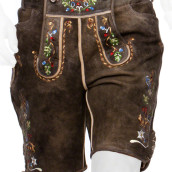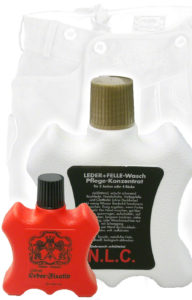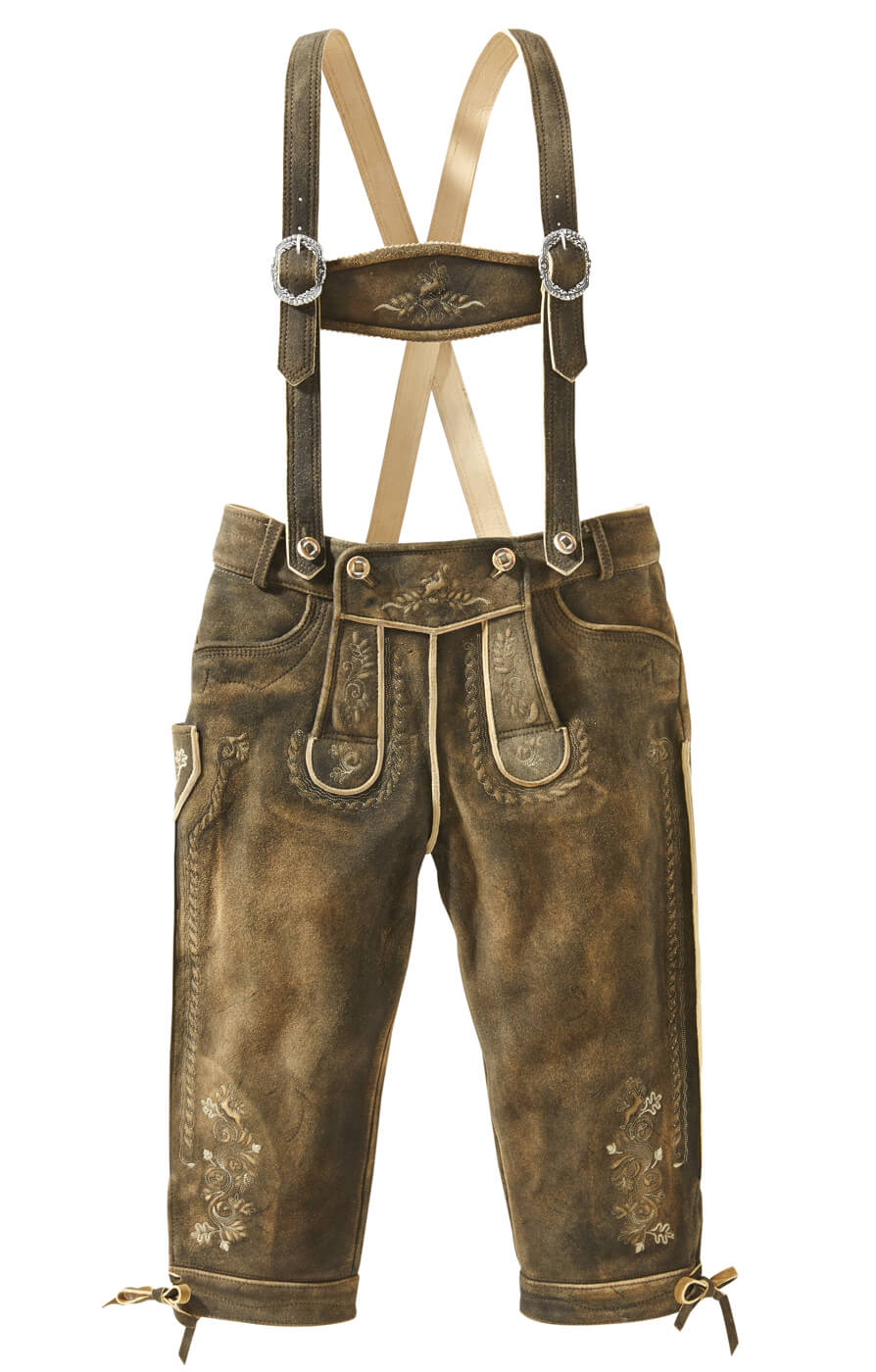Posted by trachten in Dirndl and Lederhosen, slider | Comments Off on Should you wash lederhosen?
Should you wash lederhosen?

You don’t need to be born Bavarian to understand that lederhosen are not trousers just like any other. After all, their rugged, robust ability to stand up to years of punishment is why they were invented and why they – like jeans and biker’s jackets – are cooler once they’ve got a bit of wear and tear, a few scuffs and scratches. In fact, the vintage look is so much a part of lederhosen’s appeal that many of the most popular models are distressed (a.k.a. “used look”). So in view of the prevailing aesthetic standards, if nothing else, the answer to the title question is, if you ask many lederhosen-wearers, a definitive (and slightly insulted) “no”.
What is more, very few people need to be told that you can’t just chuck leather stuff in the washing machine with everything else. Trousers, shirts, and other pieces of fabric clothing can handle high temperatures and detergents that leather can’t; in fact, leather breeches even more demanding that suits and dresses which need dry cleaning inasmuch as you can’t just take them to the cleaners and pick them up a week later.
So you mustn’t put your lederhosen in the wash – and they look better used. So why, might you ask, would anyone even ask the question?
Why you might need to wash lederhosen
There are, however, good reasons to worry about the leather in your favourite pair of lederhosen – especially now when, taking them back out of the cubby-hole in which they spend 11 months of the year and shaking them down for the approaching Oktoberfest, you realise that they don’t just look used, vintage, or even distressed, but just plain dirty. Small marks or signs of use here and there are par for the course and part of the look, but larger stains that, in the hungover twilight of last autumn looked like badges of honour, now stick out like a sore thumb. It’s not vintage anymore; it’s vile.
What’s worse is that, beyond the appearance of the lederhosen, leather covered by too thick a layer of dirt – often lovingly written off as “patina” – is leather which can no longer breathe. And when leather can no longer breath, it gets both less comfortable and far stiffer. As such, the wearer starts to sweat faster and may also feel constrained when sitting down.
So whether it’s a slightly-too-thick ayer of dirt or a couple of bad stains, there are times when lederhosen need some TLC. They don’t get cleaned, though, as you might expect, but actually washed in water. Yes, sounds odd, doesn’t it? We all know that water can be damaging to leather. Leather can, however, and should be washed wet: it is things like strong detergents, fast spin-cycles, and overly-fast drying that cause problems, not the water itself.
How to wash your lederhosen
 So if your favourite beer-breeches need a spruce up before this year’s Fest, here’s how to go about it:
So if your favourite beer-breeches need a spruce up before this year’s Fest, here’s how to go about it:
- The best way to wash lederhosen is by hand in a bowl of water.
- Use a natural, organic soap specially developed for leather (like this leather wash concentrate, for example).
- Leather should never be washed hot: make sure you use lukewarm water (i.e. no warmer than 35 degrees).
- Once washed, lederhosen should be dried slowly at room temperature; remember to move them every now and then, bringing them into shape as you turn them or hang them back up.
- After drying, kneed the leather lightly and then brush it to get it back to its original look.
Sound like a lot of work? It is. But while there are specialised professional lederhosen cleaners in and around Munich, you won’t be able to get an appointment there for months now, so if you need your lederhosen this side of the Wiesn, then you’ll need to take care of it yourself.


